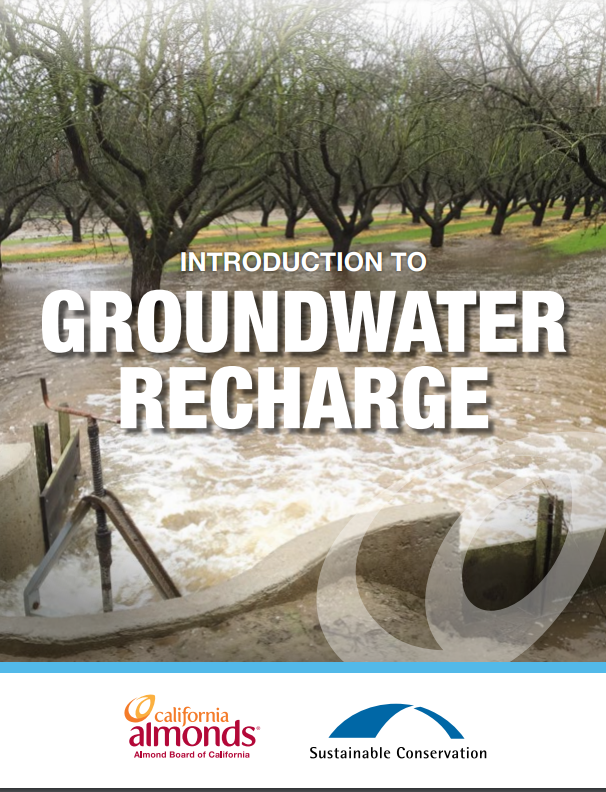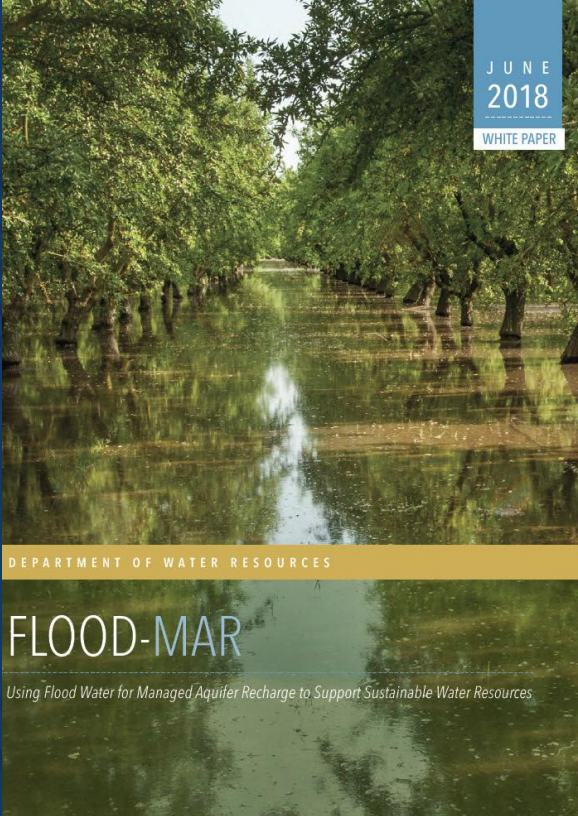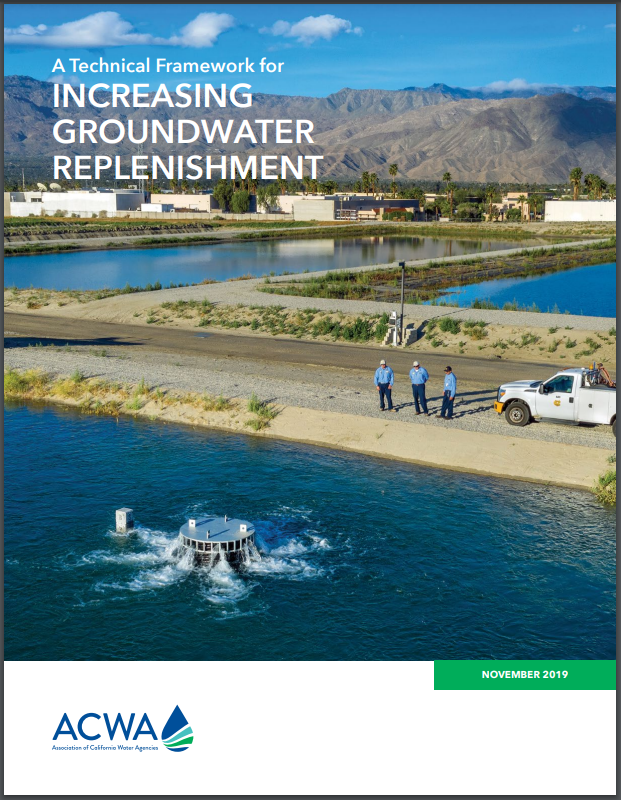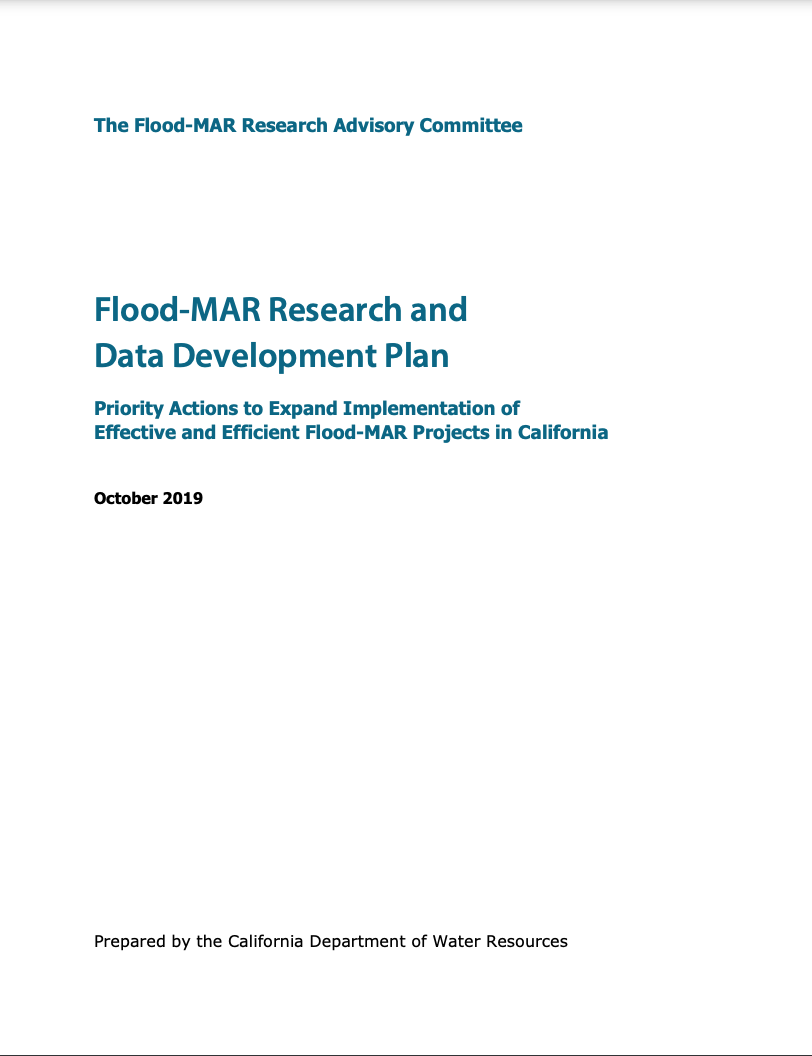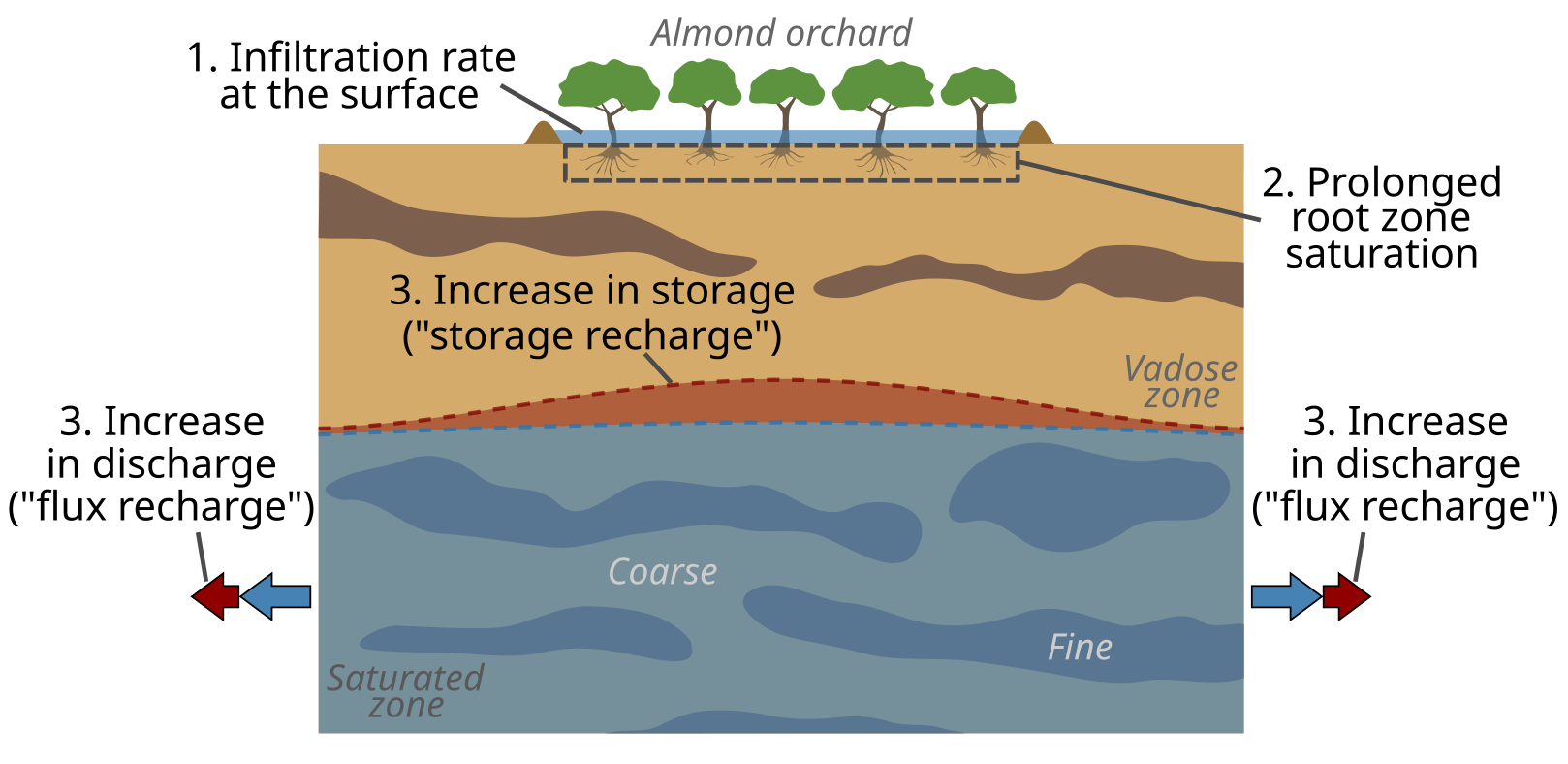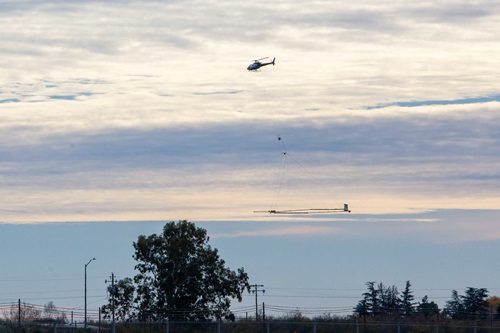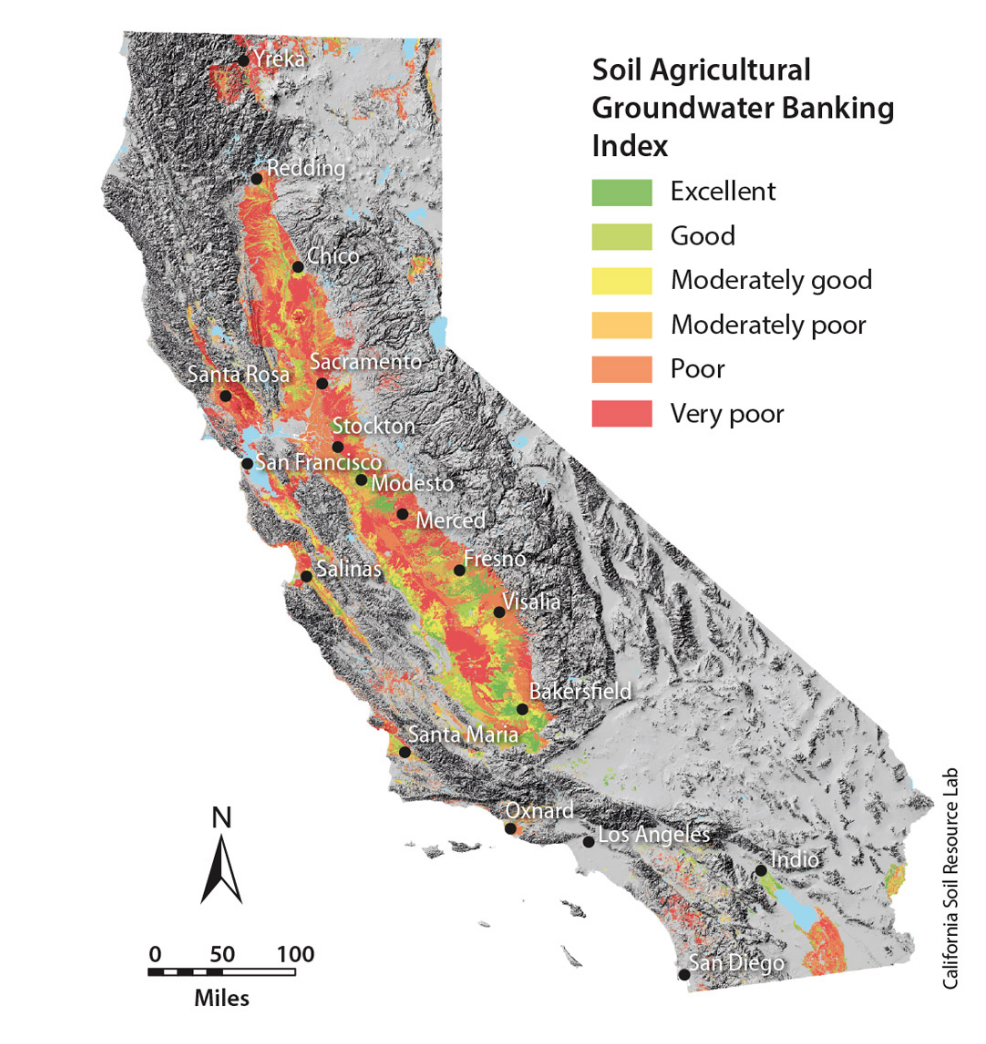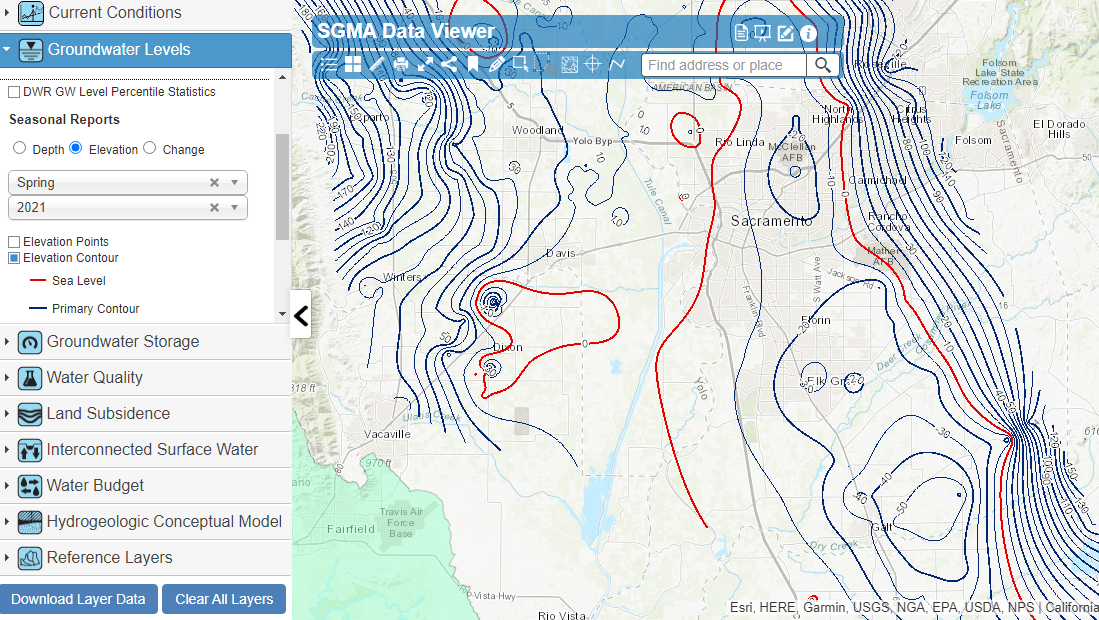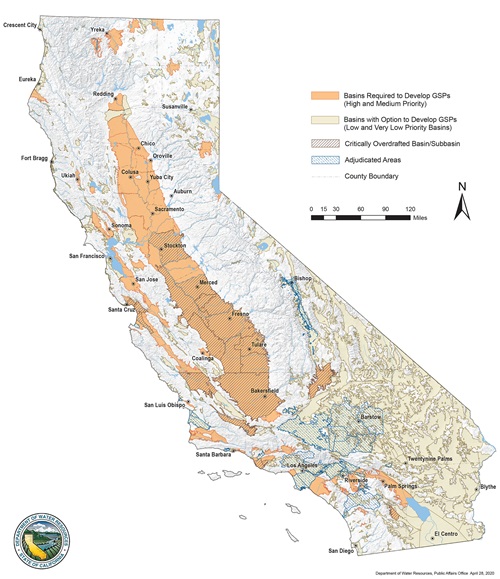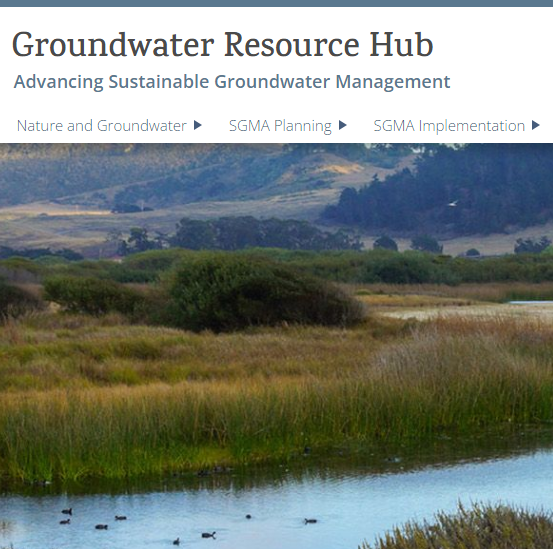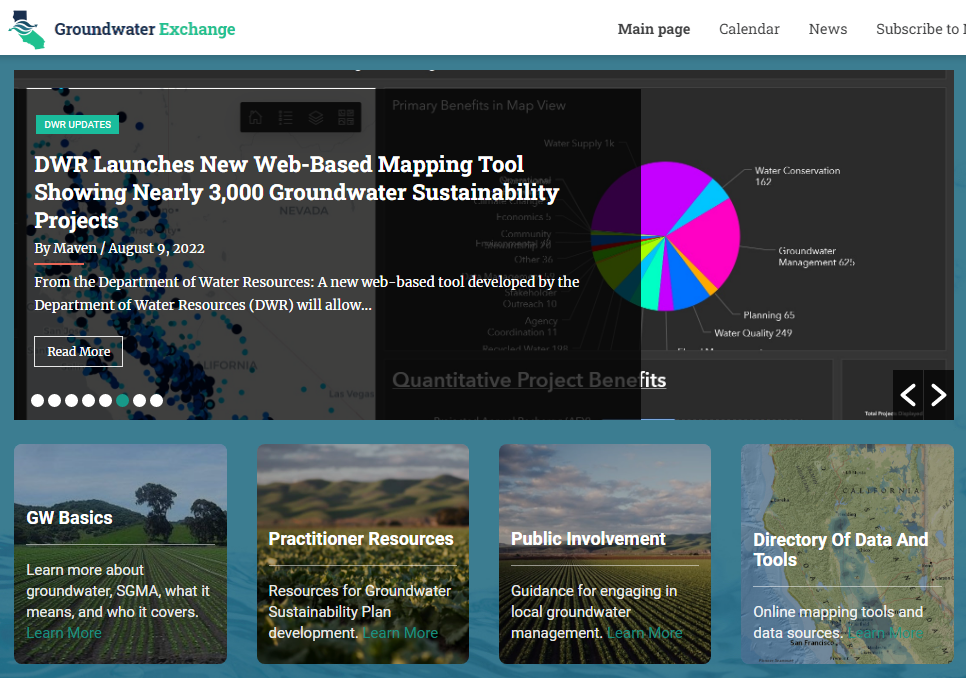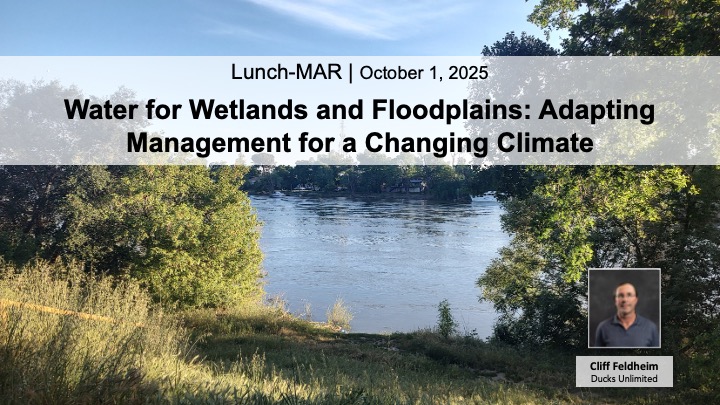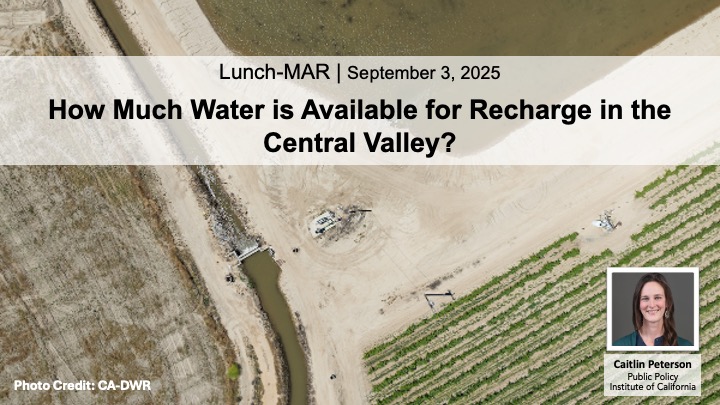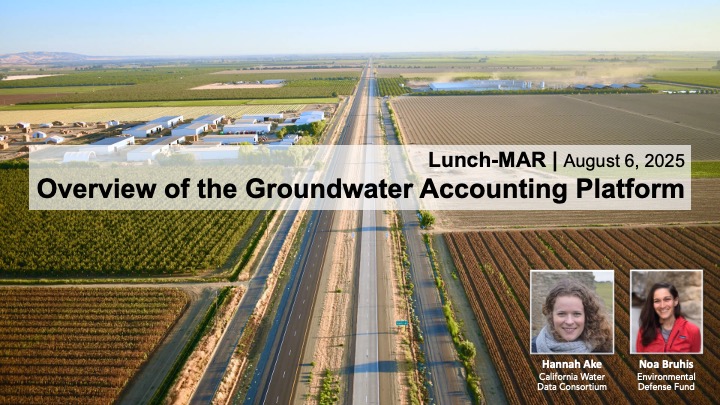This website uses cookies so that we can provide you with the best user experience possible. Cookie information is stored in your browser and performs functions such as recognising you when you return to our website and helping our team to understand which sections of the website you find most interesting and useful.
Flooding rice fields in Yuba County with groundwater (DWR, 2009).
Guidance
Link to Table View of All Guidance
Through this guide, California almond growers can begin evaluating their options for addressing local sub-basin overdraft through recharge, helping secure reliable, sufficient, and drought resilient groundwater supplies. In areas where soil conditions are suitable and excess water is available, ground water recharge represents one of the most cost-effective methods to increase storage, thereby ensuring water supply and improving water quality.
Research
Link to Table View of All Research
This Flood-MAR Research and Data Development Plan (R&DD Plan) presents the work of the Flood-MAR Research Advisory Committee (RAC), a multidisciplinary group of subject matter experts across 13 research themes. The RAC was tasked to identify the research, data, guidance, and tools necessary to support and expand the implementation of Flood-MAR projects.
Recharge is a critical component for understanding aquifer systems and the sustainable management of groundwater resources, yet this process is challenging to measure at policy-relevant spatiotemporal scales. Building upon previous research, we tested the hypothesis that InSAR can be used to observe river-sourced recharge if the underlying recharge pathways are associated with sufficient clay content.
To determine the impact of unsaturated-zone stratigraphic heterogeneity on MAR effectiveness, we simulate recharge at a Central Valley almond orchard surveyed with a towed transient electromagnetic system. First, we identified three outcomes of interest for MAR sites: infiltration rate at the surface, residence time of water in the root zone and saturated-zone recharge efficiency, which is defined as the increase in saturated-zone storage induced by MAR.
Tools and Data
Link to Table View of All Tools and Data
The Department of Water Resources is conducting airborne electromagnetic (AEM) surveys in California’s high- and medium-priority groundwater basins, where data collection is feasible, to assist local water managers as they implement the Sustainable Groundwater Management Act (SGMA) to manage groundwater for long term sustainability.
The Soil Agricultural Groundwater Banking Index (SAGBI) is a suitability index for groundwater recharge on agricultural land. The SAGBI is based on five major factors that are critical to successful agricultural groundwater banking: deep percolation, root zone residence time, topography, chemical limitations, and soil surface condition.
As part of DWR’s technical assistance to Groundwater Sustainability Agencies (GSAs), other water managers, and the public, DWR has developed the SGMA Data Viewer. The SGMA Data Viewer provides access to groundwater-related datasets that are organized by the requirements of SGMA and the Groundwater Sustainability Plan (GSP) regulations for the purposes of supporting GSP development and implementation.
References
Link to Table View of All References
The historic passage of SGMA in 2014 set forth a statewide framework to help protect groundwater resources over the long-term. SGMA is comprised from a three-bill legislative package, including AB 1739 (Dickinson), SB 1168 (Pavley), and SB 1319 (Pavley), and subsequent statewide Regulations. In signing SGMA, then-Governor Jerry Brown emphasized that “groundwater management in California is best accomplished locally.”
The purpose of the Groundwater Resource Hub is to help local agencies achieve sustainable groundwater management by providing the science and tools needed to help address nature’s water needs. Over time, the goal is to improve statewide and local understanding of nature’s groundwater needs to reduce uncertainties and therefore enhance sustainable groundwater management.
The Groundwater Exchange is a central, collaborative, and publicly accessible online resource center connecting water managers, water users, and community members with tools and resources to support the design and implementation of effective Groundwater Sustainability Plans under California’s Sustainable Groundwater Management Act.
Flood-MAR Videos
Water for Wetlands and Floodplains: Adapting Management for a Changing Climate (Lunch-MAR | Oct 2025)
In California’s Central Valley, nearly all wetland habitat relies on actively managed water. As climate change brings less snow and more variable rainfall, wetland and floodplain managers must adapt. This session explores emerging strategies to capture, store, and distribute water based on ecological goals and water year conditions.
How Much Water is Available for Recharge in the Central Valley? (Lunch-MAR | Sept 2025)
Designing better policies to bolster recharge during wet periods is key. But California’s complex regulatory environment makes it difficult. In a survey we conducted last year, we found that even though California made great deal of progress on groundwater recharge during the banner wet year of 2023, a lot of water was left on the table. We suspected that more water could have been captured for recharge without impacting the environment or downstream users: approximately 3.5 million acre-feet, a
An Overview of the Groundwater Accounting Platform (Lunch-MAR | Aug 2025)
The Groundwater Accounting Platform is an open-source tool that helps California water managers, landowners, and water users track water budgets and usage more easily in near real-time. The California Water Data Consortium and Environmental Defense Fund have partnered to expand the Platform to new regions, and to provide additional features and functionalities to help more groundwater agencies and growers track water use allocations under the Sustainable Groundwater Management Act (SGMA).
Copyright 2022-Present, Flood-MAR and Contributing Authors.

